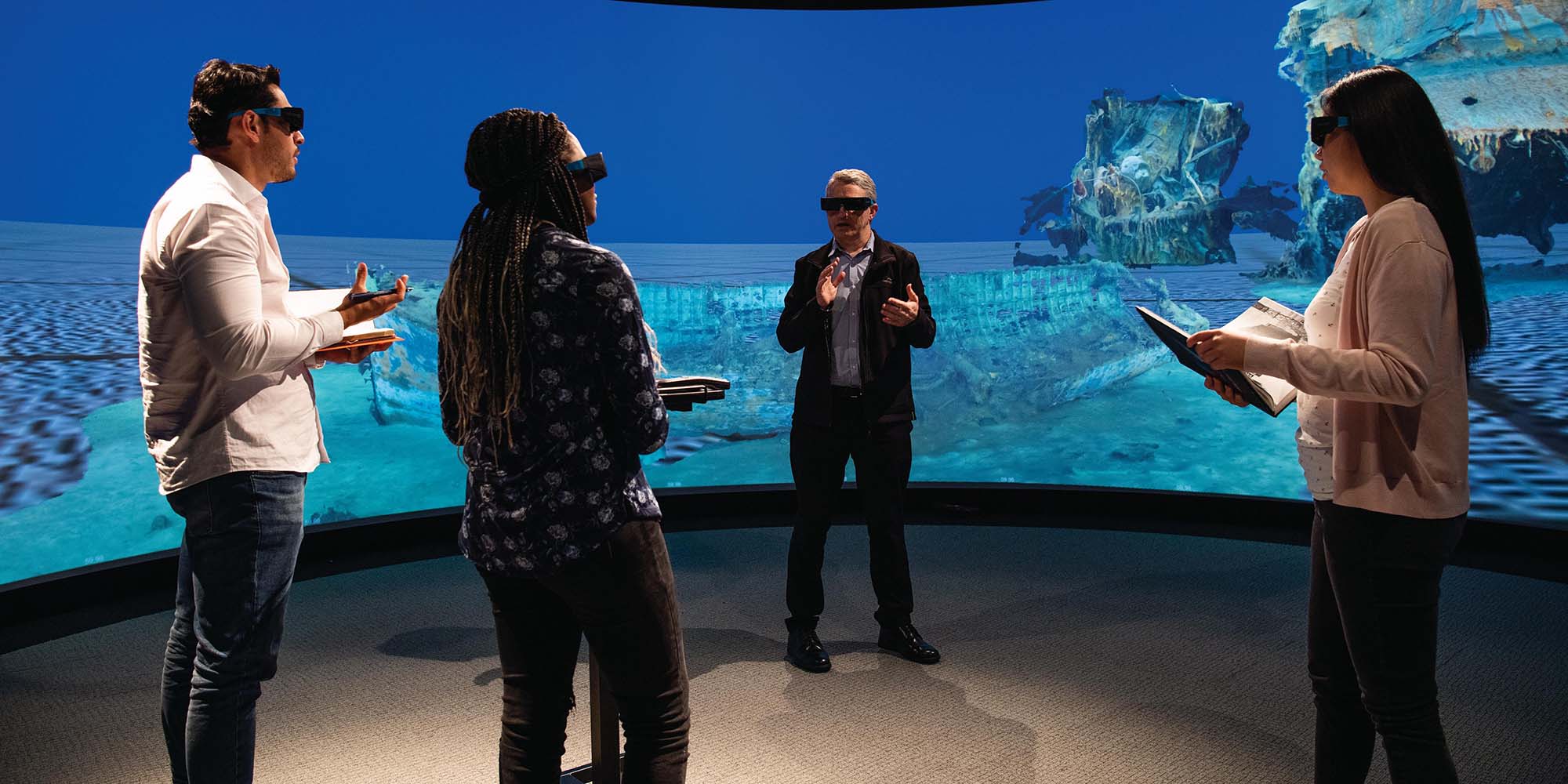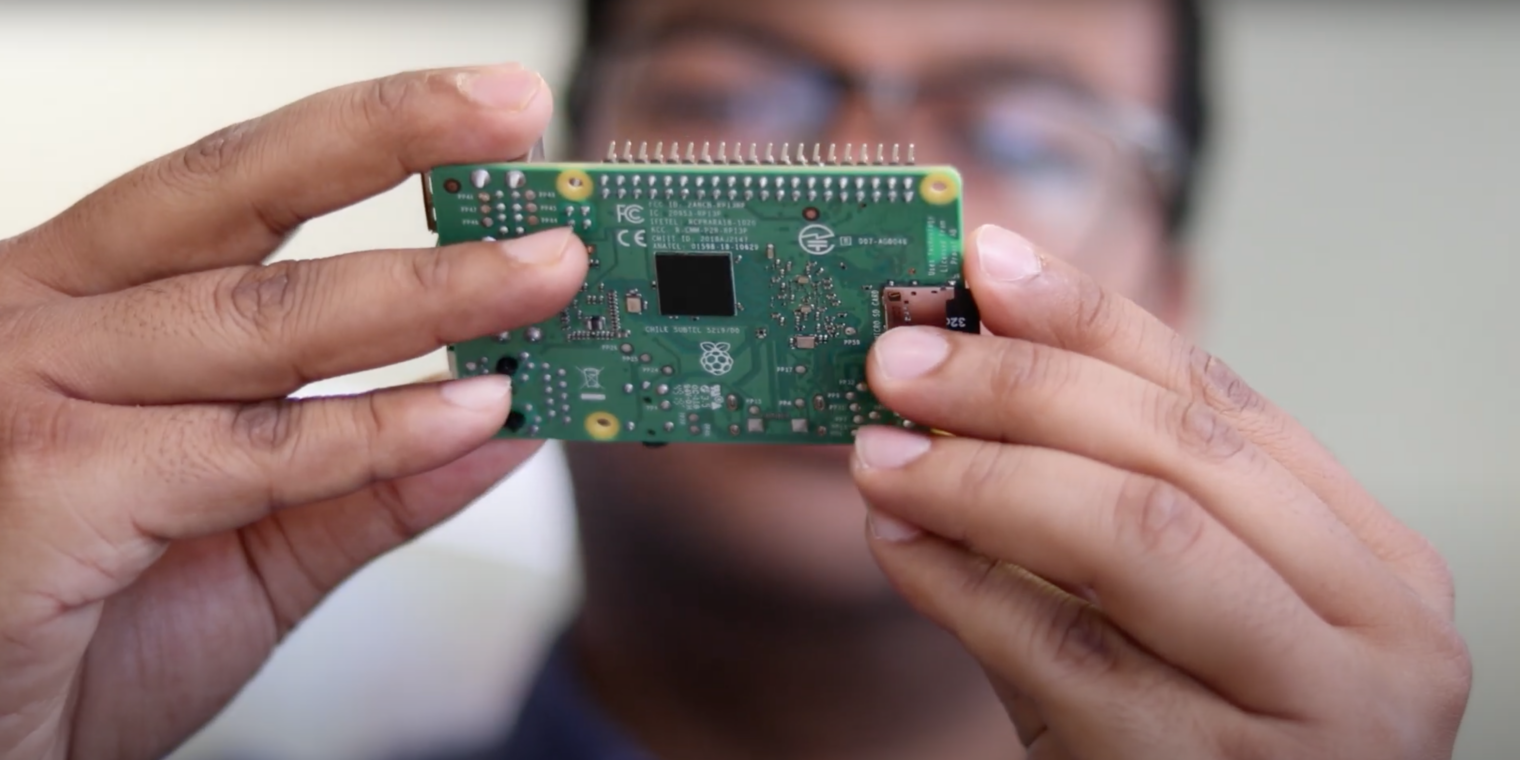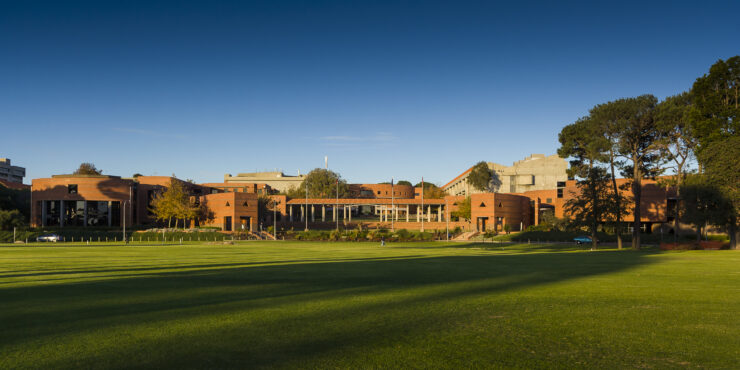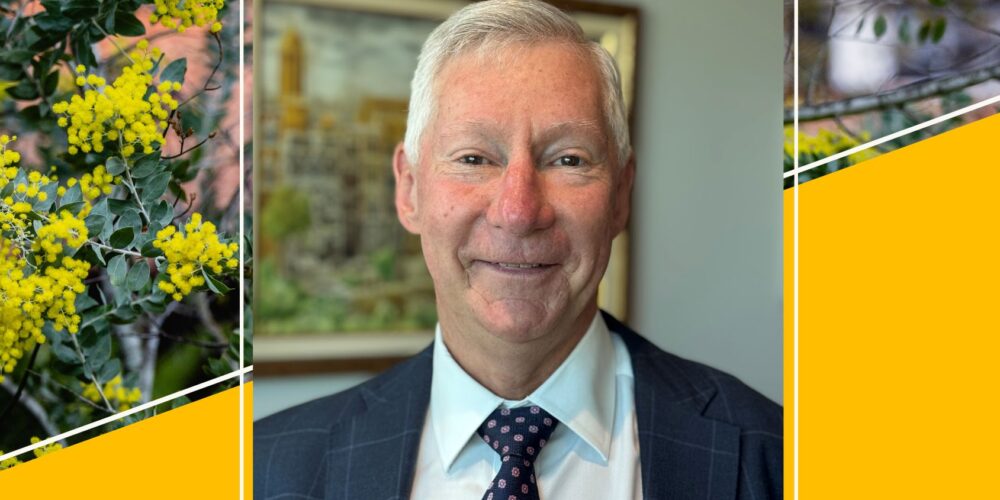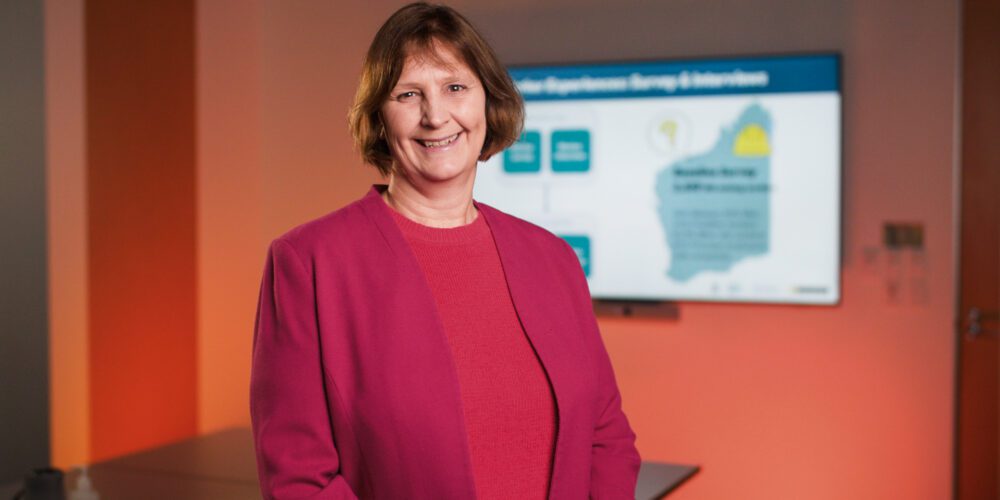Our research helps to makes sense of the dazzling amount of information at our fingertips, analyse the effect of this advancement on social structures and movements, and unlock technological possibilities for commercial and educational purposes.
Research in this area is cross-disciplinary and includes experts from Curtin’s Future of Work Institute, Curtin Centre for Computation, Centre for Culture and Technology, Hub for Immersive Visualisation and eResearch (HIVE), and Consumer Research Lab. The Pawsey Supercomputing Centre, in which we’re a joint partner, is also integral to the rapid progress of many Curtin-led projects.
Our strengths
AI and machine learning
Accessing the capabilities of Innovation Central Perth and the Optus-Curtin Centre for Excellence in Artificial Intelligence, Curtin researchers are developing AI tools for diverse industry applications.
We’ve developed a neural network that can identify mechanical faults by sound, for near-real-time classification and notification. Western Australia’s Public Transport Authority is now using the technology to detect escalator faults before they occur.
We’ve also developed a world-first app that ‘reads’ the faces of non-verbal patients (such as those with dementia) to assess pain levels. The technology is now on the market, as seen in the product, PainChek.
Learn more:
Health data linkage
Researchers in our Centre for Data Linkage are providing data linkage services capable of linking and managing health and non-health data in a secure ISO27001 certified environment. They’ve developed software that preserves strong privacy protections, and tools to maximise high standards and consistency in results. Their work is key to developing new technologies and will improve health outcomes at individual, community and population levels.
Learn more:
Consumer analysis
We are helping brands better engage with customers and improve their product branding.
Researchers at our Consumer Research Lab are using biometric methods, including eye-tracking devices and biometric wristbands, to track consumers’ cognitive, attitudinal and behavioural responses to products and marketing materials in real-time. We help organisations analyse the effectiveness of packaging design, improve product placement in stores and offer insights for more user-friendly online experiences.
Our research helps brands monitor their customer’s online presence with advanced social media analytics capabilities.
Learn more:
Culture, technology and inclusivity
Curtin’s Centre for Culture and Technology (CCAT) is located at the intersections of disciplinary and creative boundaries.
We’re investigating how identity, meanings, relationships and values are shaped by new media and communication technologies. There are six programs: Digital Intimacies; Innovation in Knowledge Communication; Indigenous Culture and Digital Technologies; Digital Inclusion and Media Access; Posthumanism-Animality-Technology; and The Digital Child.
In the Digital Inclusion and Media Access program, our researchers are helping transform the discourse around disability, to one whereby impairment is still located in the body, but disability is created by society. Digital technologies should then overcome the means to overcome such disability.
Our advocacy has led to the adoption of audio description by the Australian public broadcasters from July 2020.
Learn more:
Data science
Researchers from across numerous disciplines, ranging from astrophysics to public health and social sciences, are using expertise from theCurtin Institute for Data Science (CIDS) to develop new data science tools.
CIDS were able to assist with the tracking the spread of extremist media communications – a task that is now beyond the capability of manual analysis. The team used automated processing and machine learning to achieve contextual classification of key features in text and images.
As a core partner in the ARC Training Centre for Transforming Maintenance through Data Science, the CIDS is also helping industry apply data science to their maintenance operations, and ensure effective maintenance of assets over their lifecycle. Our researchers with expertise in modelling and simulation are improving plant automation and process control in mineral processing and extractive metallurgical processes.
Learn more:
The future of learning
New technologies are creating exciting possibilities to transform the future of learning.
We’re a partner in the ARC Centre of Excellence for the Digital Child, which is investigating the positive and negative impacts of technology on young children, with the aim of informing policy development and curricula.
We’ve also explored how to make the University’s own teaching more effective through the use of virtual reality. This includes designing immersive experiences to help first-year students better understand the molecular structures of enzymes and their reactions.
Learn more:
The future of work
Curtin’s Future of Work Institute is investigating the impact of digital disruption, automation and AI on employment patterns and skill requirements within Australian workforces.
We have expertise in work systems design, helping organisations optimise the relationship between human social systems and technical systems, particularly those involving remote teams, AI decision support systems and wearable applications.
We have also created a new SMART Work Design model to improve the wellbeing of workers and promote meaningful work in the Digital Age. The model has five themes for positive outcomes: stimulating, mastery, agency, relational and tolerable demands.
Learn more:
Virtual recreations
Our expertise in virtual reality, augmented reality and large-scale displays can help create immersive experiences and interpret data more effectively.
The Curtin Hub for Immersive Visualisation and eReserach (the HIVE) offers four large-scale visualisations systems to present and interpret data, and travel to virtual environments. One such system is The Dome: a four-metre diameter domed screen that can create 360o ultra-realistic panoramas and virtual worlds.
The HIVE has been central to the creation of virtual heritage experiences including 3D reconstructions of the HMAS Sydney (II) and HSK Kormoran. Our researchers also work closely with the Curtin Institute for Data Science to perform computational modelling and interpret data more effectively.
